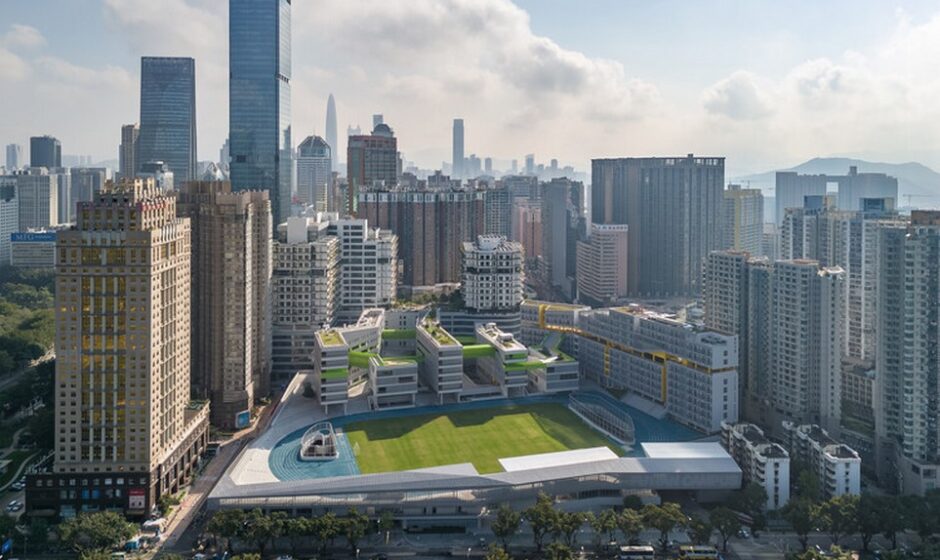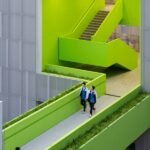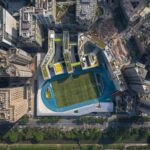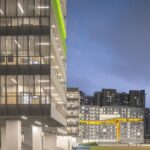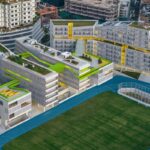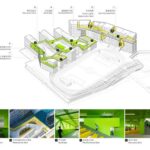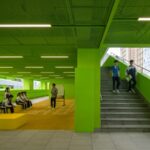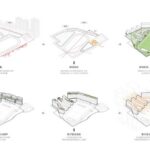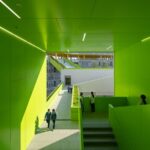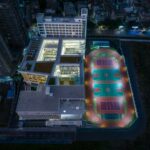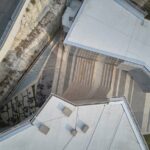In the heart of Shenzhen, a beacon of modernity and innovation in China, lies the FUTIAN High-School Campus, a pioneering model of boarding school designed by reMIX studio. Embracing the challenges of extreme urban conditions and high density, this architectural marvel reimagines the traditional concept of a school, blurring the boundaries between education and community engagement.
Contextual Dynamics: From Fishing Villages to Metropolis
Urban Evolution
Shenzhen’s remarkable journey from a cluster of fishing villages to a bustling metropolis epitomizes the rapid pace of urbanization in contemporary China. Since attaining the status of a “special economic zone” in 1980, the city has undergone unprecedented growth, evolving into a hub of innovation and progress. However, this rapid urban expansion has also engendered challenges, including hyper-densification and a scarcity of public facilities, particularly schools.
Educational Imperatives
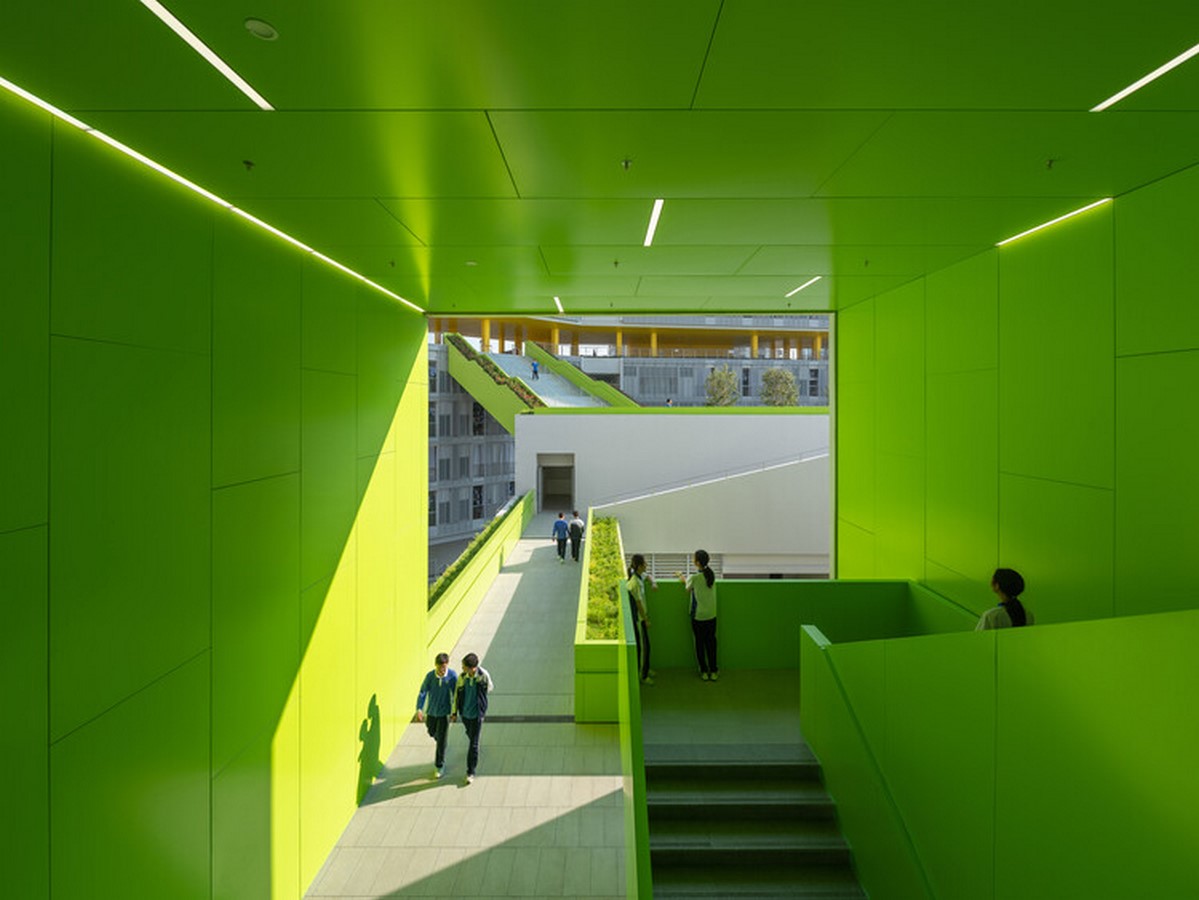
Amidst the city’s exponential growth, the demand for educational infrastructure has surged, necessitating innovative solutions to accommodate the burgeoning population. The FUTIAN High-School Campus emerges as a response to this pressing need, embodying a new vision for school design that integrates seamlessly with the urban fabric and fosters symbiotic relationships with the surrounding community.
Urban Strategy: Integration and Connectivity
Architectural Intervention
Situated at the nexus of Shenzhen’s burgeoning metropolis, the FUTIAN Campus occupies a strategic location characterized by diverse urban fabrics and dynamic spatial dynamics. Unlike conventional schools, which are often inward-focused, this campus embraces its urban context, with buildings oriented outward to embrace panoramic views of the cityscape.
Community Engagement
Central to the campus design is the principle of porousness, which fosters interaction and collaboration between students and the wider community. By elevating the running track to create a multi-level podium, the design blurs the boundaries between public and private space, offering access to shared facilities such as sports courts, a swimming pool, and an auditorium.
Design Innovations: Multiplying Grounds and Social Loops
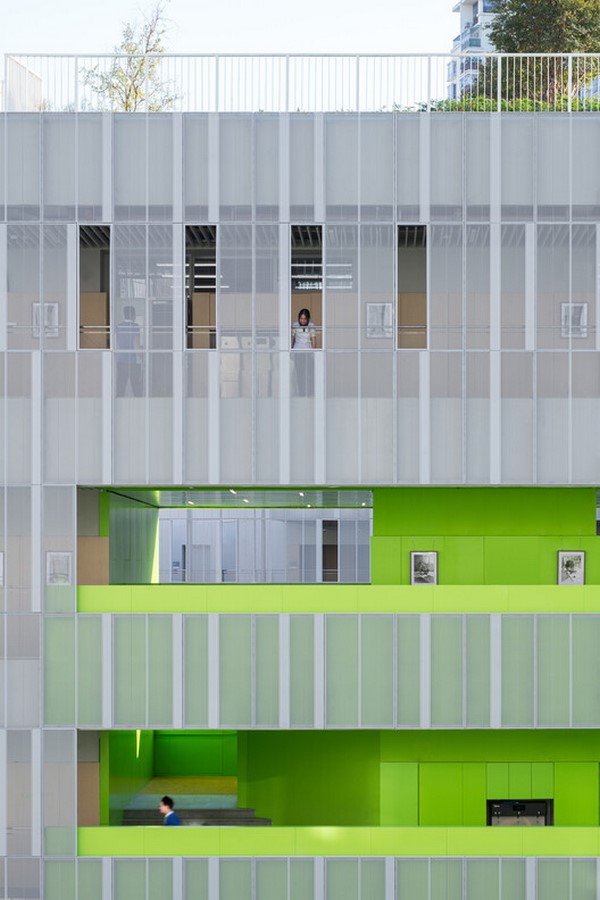
Spatial Dynamics
To mitigate the sense of density and enhance environmental sustainability, the design adopts a multipronged approach focused on maximizing porosity and “multiplying grounds.” Through the strategic insertion of voids and the dispersion of building volumes across interconnected levels, the campus creates a distributed network of outdoor spaces that encourage exploration and interaction.
Social Integration
At the heart of the campus lies the “loop,” a dynamic circulation system that transcends mere functionality to foster social cohesion and spontaneous engagement. Comprising diverse social spaces such as seating areas, amphitheaters, and roof gardens, the loop embodies a vibrant “social bend” that enriches campus life and promotes diversity.
Ecological Consciousness: A Campus for Birds and Humans
Environmental Stewardship
In addition to its educational mission, the FUTIAN Campus prioritizes ecological sustainability, serving as a habitat for migratory birds and promoting environmental stewardship among students. Green roofs, rain gardens, and botanical exhibition areas contribute to the campus’s ecological resilience while providing valuable educational opportunities for students.
Bird-Friendly Design
Recognizing its location along a crucial migratory corridor, the campus incorporates bird-friendly features such as green roofs and interconnected green spaces. These initiatives not only provide refuge for birds but also enhance the campus’s ecological connectivity, reinforcing its role as a harmonious ecosystem within the urban landscape.
In essence, the FUTIAN High-School Campus transcends the traditional boundaries of education, embodying a holistic vision of urban living that integrates learning, community engagement, and ecological stewardship. As Shenzhen continues to evolve, this architectural masterpiece stands as a testament to the transformative power of design in shaping the future of urban education.

